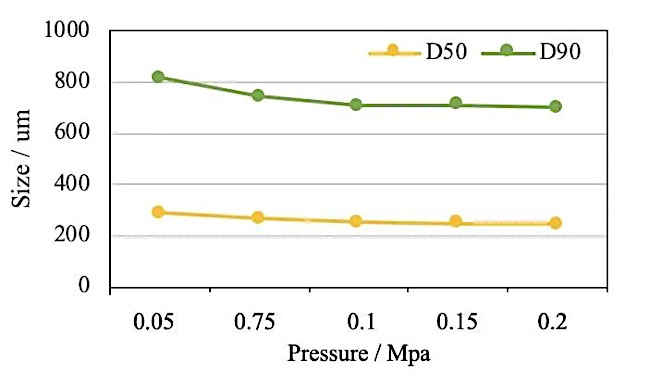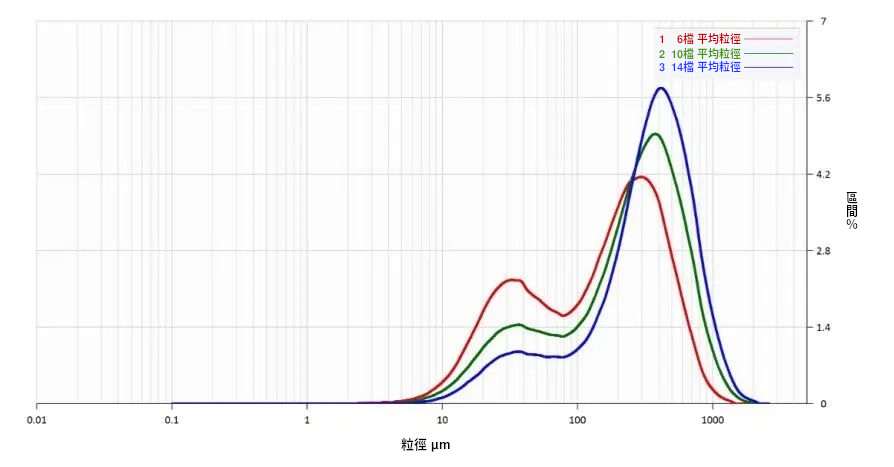Unlocking the Science of Coffee: Particle Size Analysis
Have you ever wondered why your coffee sometimes tastes like a dreamy, flavorful escape, and other times like a disappointing, bitter gulp? The secret lies in the grind.
The size of coffee powders directly impacts your brew's extraction, taste, and overall flavor. When grinding beans, the coarseness or fineness must align with your brewing method. For longer brew times, a coarser grind prevents over-extraction; for shorter brew times, a finer grind ensures full extraction.
Let's delve into the science behind coffee grinding and discover how a particle size analyzer can reveal how ground particle size influences the flavor and extraction of your cup of joe.
Why Does Grind Size Matter?
Grind size refers to the coarseness or fineness of your coffee grounds. While it may seem like a minor detail, it plays a crucial role in the brewing process as it affects the extraction rate.
Extraction is the process of dissolving the desired flavors from the coffee grounds into water. Under-extraction results in a sour, weak brew, while over-extraction leads to bitterness and an ashy taste.
Understanding Coffee Grind Sizes
Here's a breakdown of coffee particle sizes and their ideal brewing methods:
-
Extra Coarse: Peppercorn-sized, best for cold brew.
-
Coarse: Sea salt-sized, ideal for French press and pour-over.
-
Medium: Seasand-sized, suitable for Chemex and Clever Dripper.
-
Medium-Fine: Table salt-sized, perfect for Moka pot, Aeropress, siphon, and pour-over.
-
Fine: Powdered medicine-sized, ideal for espresso.
-
Superfine: Flour-like, used for Turkish coffee.
How Particle Size Affects Extraction
-
Surface Area: Smaller particles have a larger total surface area relative to their volume. This means more coffee comes into contact with water, speeding up extraction. Larger particles take longer to extract flavor due to their smaller surface area.
-
Flow Rate: A coarser grind allows water to flow more freely, resulting in slower extraction but a bolder flavor. A finer grind creates a denser bed, slowing down water flow and ensuring faster, more thorough extraction.
-
Contact Time: Different brewing methods require varying contact times between water and coffee. Espresso machines force water quickly through the coffee, requiring a fine grind for fast extraction. French presses allow for several minutes of steeping, so a coarser grind prevents over-extraction.
Finding Your Perfect Grind
Achieving the perfect grind involves balancing these three factors to optimize your brew method and taste. For coffee bean and grinder manufacturers, a particle size analyzer offers precise control over ground particle size. By tailoring the grind size to different coffee bean origins, manufacturers can ensure consistent brewing results and enhance customer satisfaction.
Dry Particle Size Analyzer
Bettersizer 2600 dry particle size analyzer, offered by ACTTR Technology, is specifically designed for powders like coffee that exhibit uneven particle sizes, agglomeration, and stickiness. Its dedicated sample feeder ensures smooth sample introduction, accelerating the testing process. Furthermore, the Bettersizer 2600 employs a forward, side, and backward scattering light detection system, providing accurate particle size distribution measurements for coffee grounds of varying coarseness.

Bettersizer 2600: Elevating Your Product
When analyzing the particle size of coffee powder, the dispersion gas pressure can be set between 0.05 MPa and 0.2 MPa. As the pressure increases from 0.05 MPa to 0.1 MPa, both D50 and D90 values gradually decrease, indicating that the agglomerated coffee particles are gradually dispersed. When the pressure further increases from 0.1 MPa to 0.2 MPa, the distribution of D50 and D90 tends to stabilize, suggesting that the coffee particles are fully dispersed.

The Particle Size Distribution v.s. Air Pressure
After determining the optimal pressure conditions, we used the same coffee grinder to grind the same type of coffee beans at three different settings: 6, 10, and 14. The particle size distribution of the resulting coffee grounds was then measured. As shown in the figure below, the Bettersizer 2600 dry particle size analyzer accurately measured the particle size and distribution of the coffee powder. The results demonstrate the continuous nature of the coffee powder distribution, indicating the coexistence of both coarse and fine particles within a specific particle size range.

| Grinding Strength | D10 (µm) | D50 (µm) | D90 (µm) |
|---|---|---|---|
| 6 | 22.42 | 163.0 | 483.6 |
| 10 | 30.73 | 259.9 | 654.9 |
| 14 | 47.89 | 341.8 | 762.5 |
Average Particle Size from The Different Grinding Strength
Granularity of Coffee Powder & The Definition of Particle Size
We've mentioned about the granularity of the coffee powder in the above paragraphs. After the analysis by 2600 particle size analyzer, we can distinguish the granularity by the actual particle size in micro-meter:
| Coffee Powder Granularity | Average Particle Size |
| Extra Coarse | 1500 µm |
| Coarse | 1000 µm |
| Medium | 750 µm |
| Medium Fine | 500 µm |
| Fine | 300 µm |
| Superfine | 100 µm |
Bettersizer 2600 Particle Size Analyzer Elevates Your Product to New Heights.
We know that controlling particle size and distribution is crucial in coffee grinding. The Bettersizer 2600 offers fully automated control, enabling rapid and accurate measurement of different coffee powders' particle size distribution. With its dedicated volumetric feeder and sample dispersion system, it effectively prevents sample agglomeration and blockages, ensuring the stability and reliability of particle size testing. For coffee machine and coffee powder manufacturers, it is an indispensable tool for product development and quality control, helping to improve product quality and consistency.
To learn more about the Bettersizer 2600 particle size analyzer, please Contact ACTTR. Our dedicated team is ready to assist you!


